Yuzhu Guo
Sensoring and Application of Multimodal Data for the Detection of Freezing of Gait in Parkinson's Disease
Oct 09, 2021
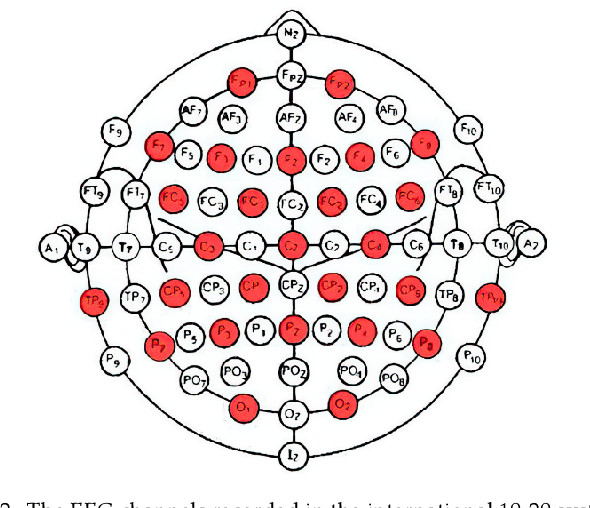
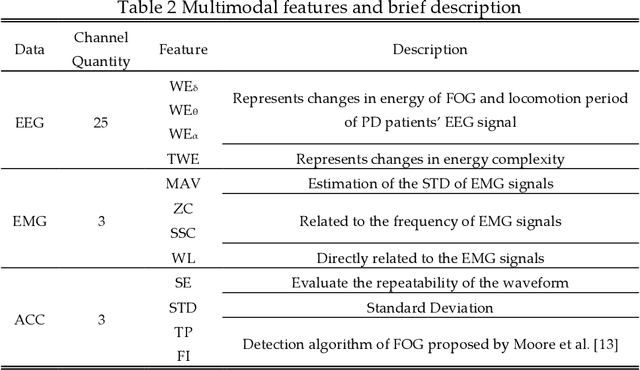
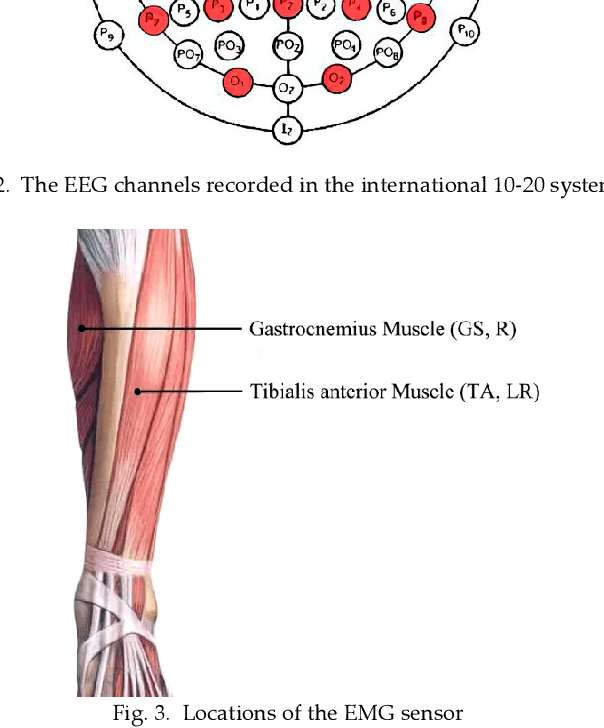
Abstract:The accurate and reliable detection or prediction of freezing of gaits (FOG) is important for fall prevention in Parkinson's Disease (PD) and studying the physiological transitions during the occurrence of FOG. Integrating both commercial and self-designed sensors, a protocal has been designed to acquire multimodal physical and physiological information during FOG, including gait acceleration (ACC), electroencephalogram (EEG), electromyogram (EMG), and skin conductance (SC). Two tasks were designed to trigger FOG, including gait initiation failure and FOG during walking. A total number of 12 PD patients completed the experiments and produced a total length of 3 hours and 42 minutes of valid data. The FOG episodes were labeled by two qualified physicians. Each unimodal data and combinations have been used to detect FOG. Results showed that multimodal data benefit the detection of FOG. Among unimodal data, EEG had better discriminative ability than ACC and EMG. However, the acquisition of EEG are more complicated. Multimodal motional and electrophysiological data can also be used to study the physiological transition process during the occurrence of FOG and provide personalised interventions.
A New Modal Autoencoder for Functionally Independent Feature Extraction
Jun 25, 2020



Abstract:Autoencoders have been widely used for dimensional reduction and feature extraction. Various types of autoencoders have been proposed by introducing regularization terms. Most of these regularizations improve representation learning by constraining the weights in the encoder part, which maps input into hidden nodes and affects the generation of features. In this study, we show that a constraint to the decoder can also significantly improve its performance because the decoder determines how the latent variables contribute to the reconstruction of input. Inspired by the structural modal analysis method in mechanical engineering, a new modal autoencoder (MAE) is proposed by othogonalising the columns of the readout weight matrix. The new regularization helps to disentangle explanatory factors of variation and forces the MAE to extract fundamental modes in data. The learned representations are functionally independent in the reconstruction of input and perform better in consecutive classification tasks. The results were validated on the MNIST variations and USPS classification benchmark suite. Comparative experiments clearly show that the new algorithm has a surprising advantage. The new MAE introduces a very simple training principle for autoencoders and could be promising for the pre-training of deep neural networks.
Boosted Convolutional Neural Networks for Motor Imagery EEG Decoding with Multiwavelet-based Time-Frequency Conditional Granger Causality Analysis
Oct 22, 2018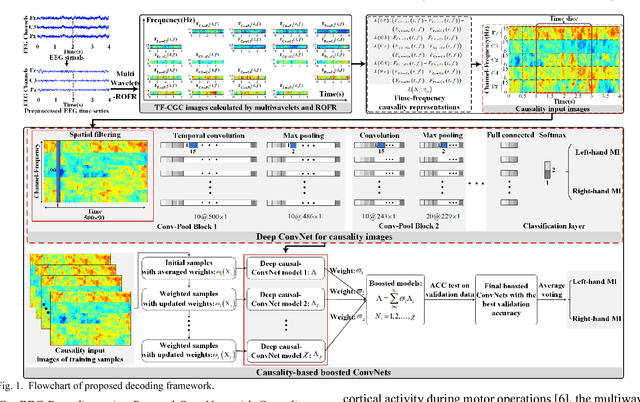
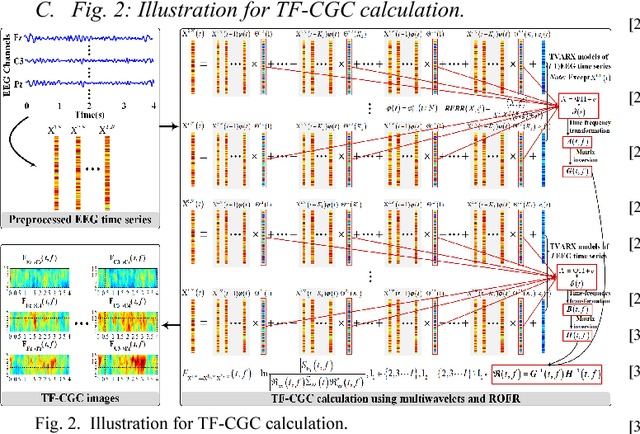
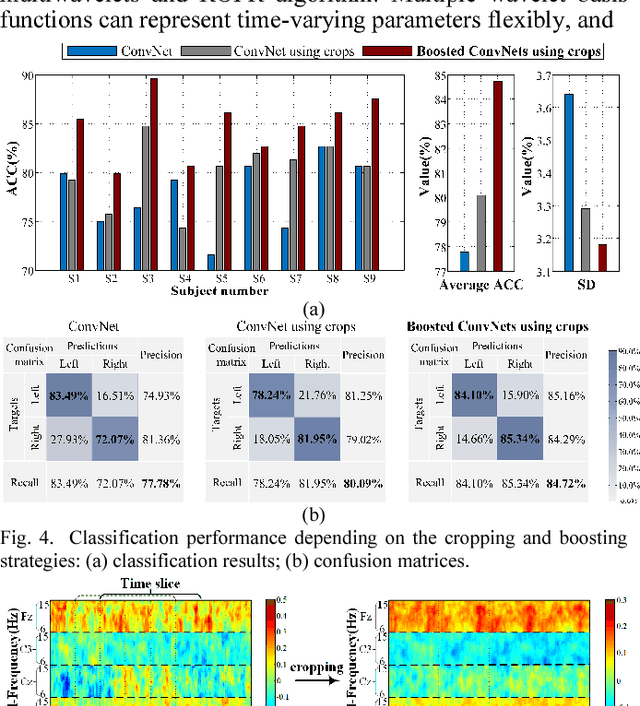
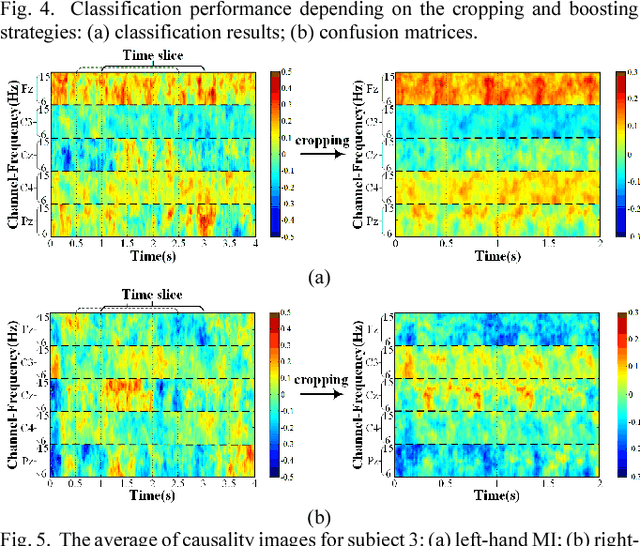
Abstract:Decoding EEG signals of different mental states is a challenging task for brain-computer interfaces (BCIs) due to nonstationarity of perceptual decision processes. This paper presents a novel boosted convolutional neural networks (ConvNets) decoding scheme for motor imagery (MI) EEG signals assisted by the multiwavelet-based time-frequency (TF) causality analysis. Specifically, multiwavelet basis functions are first combined with Geweke spectral measure to obtain high-resolution TF-conditional Granger causality (CGC) representations, where a regularized orthogonal forward regression (ROFR) algorithm is adopted to detect a parsimonious model with good generalization performance. The causality images for network input preserving time, frequency and location information of connectivity are then designed based on the TF-CGC distributions of alpha band multichannel EEG signals. Further constructed boosted ConvNets by using spatio-temporal convolutions as well as advances in deep learning including cropping and boosting methods, to extract discriminative causality features and classify MI tasks. Our proposed approach outperforms the competition winner algorithm with 12.15% increase in average accuracy and 74.02% decrease in associated inter subject standard deviation for the same binary classification on BCI competition-IV dataset-IIa. Experiment results indicate that the boosted ConvNets with causality images works well in decoding MI-EEG signals and provides a promising framework for developing MI-BCI systems.
 Add to Chrome
Add to Chrome Add to Firefox
Add to Firefox Add to Edge
Add to Edge